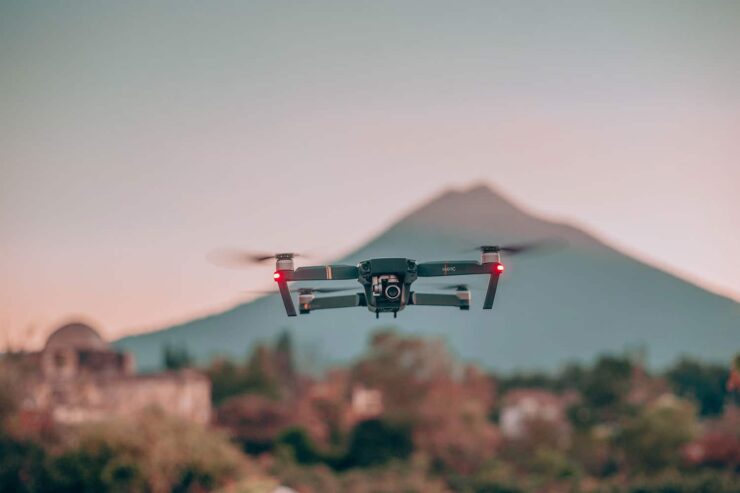
New Delhi: American startup Electric Sky is working on power beaming system for drones after winning a prestigious grant from the Defence Advanced Research Projects Agency (DARPA) of US. It has begun building its first Whisper Beam transmitter for providing tightly focused wireless power to drones in flight, thanks to a $225,000 award.
In keeping with its policy of investing in breakthrough technologies for national security, DARPA has for the past sixty years, held to this singular and enduring mission of making pivotal investments in breakthrough technologies for national security.
The genesis of that mission and of DARPA itself dates to the launch of Sputnik in 1957, and a commitment by the United States that, from that time forward, it would be the initiator and not the victim of strategic technological surprises. Working with innovators inside and outside of government, DARPA has repeatedly delivered on that mission, transforming revolutionary concepts and even seeming impossibilities into practical capabilities.
This has resulted in bringing not only game-changing military capabilities such as precision weapons and stealth technology, but also such icons of modern civilian society such as the Internet, automated voice recognition and language translation, and Global Positioning System receivers small enough to embed in myriad consumer devices.
As Electric Sky said that today people haul their energy around with them which is expensive. Whether it’s the cost of combustion or the burden of batteries, we’re all being held back. It is pioneering movement under external power, making transportation more swift, sustainable and economical.
Electric Sky will help travel move faster, cleaner, quieter, and more economically. UAVs (drones) will do more for you, using external power to carry more aloft. Flying across town in a Urban Air Mobility vehicle (flying car) or around the planet in an eJet, you can pay a lower ticket price, to arrive sooner, with zero emissions, making less noise along the way.
The company sources power from the electrical grid, a reservoir of energy that’s less expensive than most any other, and has the potential to become the cleanest. It than transports that energy up to the vehicle while in flight. As a result the vehicle can be lighter, faster, and less expensive to operate.
The company says that this would enhance speed and also with a lower ticket price, this footprint would be appreciated by the consumer. The company is indeed pioneering a novel architecture for generating “non-gaussian” waves.
Seeing this work by Electric Sky, the American agency DARPA probably decided to encourage this and help it in boosting this project.
Electric Sky will explore adapting its wireless charging architecture to power a swarm of drones. It will use the six-month Phase I award, granted through DARPA’s Small Business Innovation Research program, to explore ways to adapt its wireless architecture to power a swarm of drones.
The first phase of the project is for building and testing a lab-bench demonstration system that would operate at short distances. Those experiments are expected to supply data that can be used to upgrade the system for higher power and longer distances.
Electric Sky’s CEO Robert Millman, previously served as general counsel for Jeff Bezos’ Blue Origin space venture. Former XCOR Aerospace CEO Jeff Greason is the company’s co-founder, chief technologist and the inventor of the Whisper Beam system. The company has offices in the Seattle area as well as in Midland, Texas.
The company’s mission is to pioneer novel electric power and propulsion technologies for aircraft and flight vehicles of all sizes. This is not the only startup focusing on wireless power for drones. Seattle-based PowerLight Technologies, for instance, is working on a laser-based system that could power up unpiloted aerial vehicles as well as 5G base stations. But Electric Sky’s proprietary technology takes a different approach.
Laser and microwave beams typically start out strong but get weaker as they travel outward. In contrast, Whisper Beam’s transmissions start out weak but get stronger near the receiver.
“Whisper Beam technology is the electromagnetic equivalent of a whispering gallery,” Millman said in a news release. “In a whispering gallery a single listener across the room can hear the speaker but no one else can, not even people standing directly between the speaker and listener. The sound is too weak for them to hear.”
The radio waves sent out by Electric Sky’s transmitter self-focus at the receiver, enabling the drone to draw kilowatts of power in any kind of weather.
“It’s a myth that long-distance power transmission is impossible,” Greason said. “It’s just never been economical. This new method reduces the cost of the ground transmitter and the size of the vehicle’s onboard receiver.”
Greason said the beaming system could be used with any type of electric aircraft while in flight.
“Whisper Beam technology is particularly helpful in the power-hungry phases of takeoff and climb, enabling vehicle designers to meet other requirements to extend range, enhance flight safety, reduce peak loads on batteries, and shorten ground turnaround times,” he said.
With Whisper Beam technology, radio waves self-focus at the receiver, enabling the UAV to draw kilowatts of power in all weather. The waves are weak everywhere else, even directly between transmitter and UAV.
“Electric flight is more economical and environmentally-friendly than fossil fuels; our goal is to add the range it needs to out-compete fossils,” Millman added.
For DARPA, Electric Sky will explore adapting the new wireless architecture to power a swarm of UAVs. Working under DARPA’s Small Business Innovation Research (SBIR) program, Electric Sky will build and test a lab-bench demonstrator at short distances. These experiments will supply data needed to upgrade to higher power and longer distances, then adapt the transmitter to follow UAVs across the sky.








